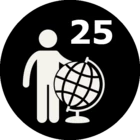I got two layer - one GeoTiff with DTM from Lidar data, the other is a shape file or another surface layer. I want to compare them (in ArcGIS or QGIS) you find procedures like "cut and fill" - in the end you got a summary of shapes and their volumes (positive = fills, negative = cuts). I need this for a couple of projects in my job - plan a road and calculate the bilance of the material or compare Lidar data for change detection. (I hope my English isn't to bad.)
Thank you!



